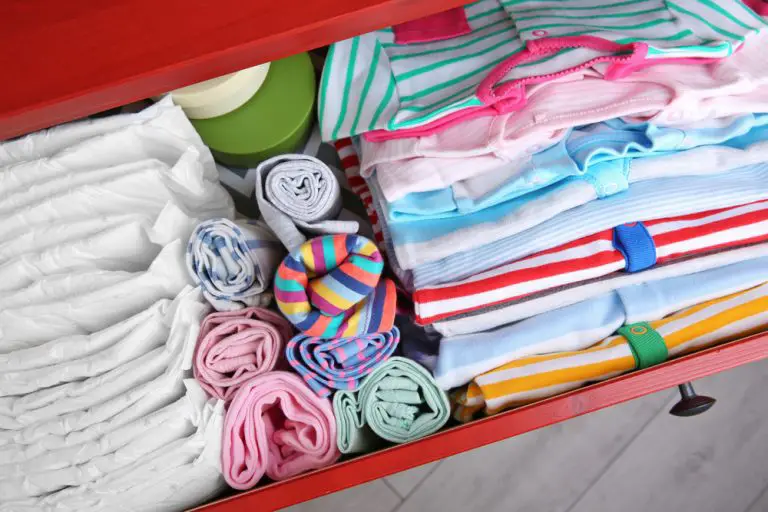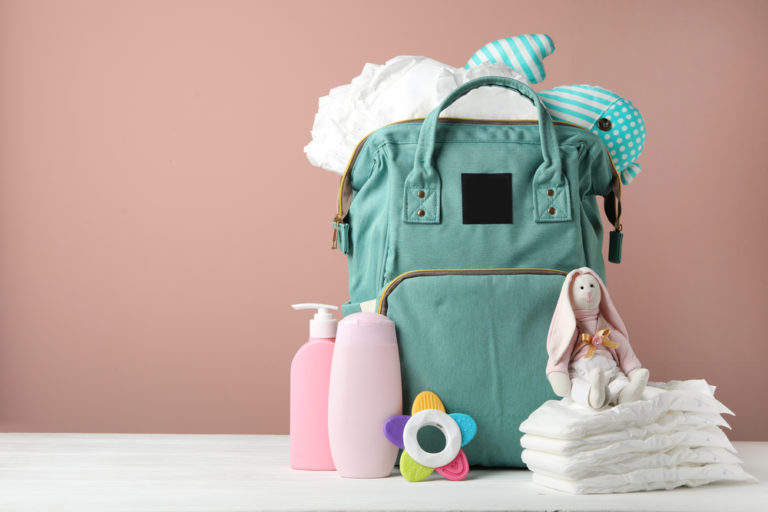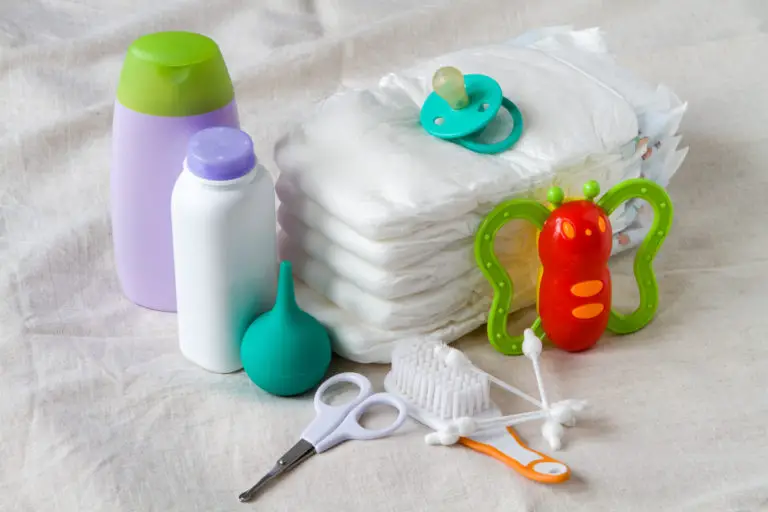Elimination Communication: The Beginners Guide (2024)

Elimination communication is the process through which a parent or caregiver uses timing, signals, and cues to discover their child’s need to eliminate waste. Parents attempt to read their baby’s signals and cues instead of using a diaper then hold their baby over a toilet or other waste receptacle.
In time, they hope that the child becomes used to using the toilet and therefore becomes potty-trained at a young age. While a common practice in some parts of the world, it is not very popular in the United States, primarily due to logistics and the introduction of the disposable diaper.
- What is Elimination Communication?
- Benefits of Elimination Communication
- Drawbacks of Elimination Communication
- Components of Elimination Communication
- What is the Best Age for Elimination Communication?
- How to Start the Elimination Communication?
- Essential Supplies
- Should You Practice Elimination Communication?
What is Elimination Communication?
Put simply, the elimination communication method of potty training is when parents pay attention to the signs and signals that their child needs to eliminate waste, aka pee and poop, and then hold them over a waster receptacle.
The idea is to cut out diapers and have children use the potty independently from a young age. Elimination communication or EC training can be broken down into a few key components.
Healthline outlines these as timing, signals, intuition, and cues. (1) Together these four components will allow you to track your baby’s natural elimination schedule and may ultimately result in a diaper-free home!
Elimination Communication vs. Potty Training
While elimination communication can be viewed as a natural potty training method is not potty training in the traditional sense. The goal of elimination training is to make potty training unnecessary.
With EC potty training, you, as a parent, are attempting to read your baby’s signals such as grunts, gas, scrunched up face, belly gurgles, etc. Traditional potty training relies on an older child being able to communicate the need for the toilet.
When elimination potty training is successful, your child will become independent with the toilet at a much younger age than those who use diapers first.
Origins of Elimination Communication
Author Ingrid Bauer created the term elimination communication in her book Diaper Free: The Gentle Wisdom of Natural Infant Hygiene. However, Ingrid Bauer was not the first person to develop the concept of diaperless babies or natural infant hygiene.
This practice is quite common in Africa and Asia (2), where disposable diapers are not routine. In addition, some cultures do not have easy access to diapers, disposables, or cloth, and for others, it never became a part of the culture.
Even in the United States and most Western Europe, diaper-free babies were the norm in many households, and infants were taught to use the toilet until the 19th c.
Then, however, the advent of the cloth and then disposable diapers and the two-parent working household post-WWII created the trend for diapers and later potty-training.
Benefits of Elimination Communication
There are several benefits to this diaper-free baby method. Chief among them; you save money. No diapers mean fewer out-of-pocket expenses.
It is also excellent for the environment, as even cloth diapers have an environmental impact. Lastly, your baby’s bottom will stay rash-free, and they will develop toilet independence at a much younger age than many peers.
Saves You Money
It’s a no-brainer; babies without diapers will save you money. One average American families spend $75 a month on disposable diapers; that’s nearly $1,000 per year. (3) But, of course, that is also before you add the cost of diaper wipes, a diaper pail, diaper pail liners, diaper cream, and all the other associated costs that go into diapering.
Positive Environmental Impact
It is believed that a disposable diaper will take 500 years to decompose. That means every disposable diaper that has ever been made is still on this planet, with a lot more to come.
While more environmentally friendly for sure, cloth diapers also use natural resources in manufacturing and all the washing. These reasons alone are enough for the environmentally conscious to consider natural potty training.
No Diaper Rash
If you have a diaperless baby, then they cannot get a diaper rash! Diaper rash is caused by your baby’s bottom sitting in wet diapers with no air.
However, even babies with the most diligent parents or who use cloth diapers can still be prone to diaper rash. If their bottom remains bare, then they won’t be sitting in any wetness.
More Comfortable for Your Baby
Diapers cut off the airflow to your baby’s bottom, which can create diaper rash. Diapers can also fit too snuggly, especially if you use cloth diapers and have a baby in between sizes.
The elastic bands in the waist and thighs may be uncomfortable for more sensitive babies. It is a common sight in the summer to see babies running around in nothing but a diaper because it is more comfortable, so why not just remove the diaper for all-out comfort?
Easier Transition to Toilet Training
If you opt to use elimination potty training, your child will learn at a young age how to use the toilet. In addition, they will develop an understanding that the toilet is where their waste goes, so an EC baby will already be familiar with the concept without you having to do a whole “introduction to the potty.”
Drawbacks of Elimination Communication
Despite the benefits of EC potty training, there are a few drawbacks; mainly, it is time-consuming.
To be effective at this style, you need to have a lot of time on your hands to observe and document your baby’s cues and signals, and it will make putting your baby in childcare impossible.
Second, it can be very messy because you are not always going to get it right.
Third, some children will not respond well to this style and may still require traditional diapering. Finally, you are likely to face isolation as many people will not understand your method and may think it “odd” or “weird.”
Time & Convenience
The main component of elimination communication involves the parents understanding baby communications.
This requires a lot of time and effort because you will have to watch and observe your baby for the signs and signals that indicate they need to go.
It also isn’t very convenient for running errands, visiting friends, and you definitely will not be able to put your child into a traditional childcare setting without also using disposables.
If your baby has an accident while you’re on the go, that makes things very tricky to clean up.
It’s Messy
Diaperless baby training is messy. Babies’ communication styles vary, and your baby may have different signals from one day to the next, meaning you are likely to have messes on your hands.
Naturally, this means more clean-ups and more laundry. As an already exhausted new parent, you’ll need to consider if you want to add this type of stress to your day.
It’s Not for Every Child
All children are different and try as you might, your child might be one that just doesn’t connect with this method.
For example, some children may have sensory pr communication issues that make it hard for them to know they are about to eliminate.
Additionally, many children with sensory or other communication issues may not be able to provide the signals parents need to read. (4)
Isolation
Many parents who have gone this route discuss feeling elimination-communication criticism and isolation. (5) People may find it weird or odd that you don’t use diapers like them.
They may believe that it is impossible to rely on newborn communication to potty-train. Most likely, they simply won’t understand why you would want to do this when you could easily put a diaper on your baby like them.
Components of Elimination Communication
There are four main components to elimination communication: timing, signals, cueing, and intuition. All four of these pieces are equally crucial if you decide to EC potty train.
You must learn when your baby typically goes to the bathroom and what signals your baby gives before elimination. You will use basic intuition after a while and “just know” when it is time, and you can use verbal and visual cues to help your baby understand it is time to go.
1. Timing
Elimination Communication 101 is that first, you need to learn your baby’s schedule. For example, do they typically go right when they wake up or 5 minutes later? What about after eating? Is there a 10-minute wait or 30-minutes? The best way to learn this is to keep a journal or a log of when they eat, sleep and go to the bathroom. It will be tedious at first, but you should start to see some patterns developing after a few weeks.
2. Signals
Baby elimination communication includes signals from your baby that it is time to go! For example, they may pass gas or start to grunt if a bowel movement is imminent. Other communication elimination is about to happen could be fussing, crying, pausing their activity, or waking up from sleep. Keep track of these in your log, along with the timing information.
3. Cueing
Cueing involves using sound or visual cues to help your child learn when it is time to go potty. For example, you may hold or position your baby a specific way when it is time to go. You may also make a specific noise as they pee, so they learn to associate that noise with going. You could even teach your baby sign language as a way to cue it is time to use the bathroom.
4. Intuition
Intuition means you start to know and predict when your baby will go based on previous experiences, baby communications, and observations. Intuition is your instincts telling you it’s time to have your little one try to go. We use intuition in other areas of our life; it is what some people refer to as that “gut feeling.”
What is the Best Age for Elimination Communication?
Most people recommend you start elimination communication anytime between birth and eighteen months. (6)
However, since the technique requires a lot of time and focus from parents, you may wait to wish until your baby is sleeping through the night around six or seven months, and you have more energy!
Some people choose to start at birth, and that can work, but keep in mind you will not be sleeping much, and there will be many other overwhelming and wonderful experiences as you learn how to care for a tiny human!
One benefit of starting sooner rather than later is that your child could be potty-trained as early as six months. Additionally, parents will use virtually no diapers for babies in homes that start baby EC early.
How to Start the Elimination Communication?
Before you began elimination communication potty training, you must first make some decisions and complete some research.
- Decide when to start.
- Will you be starting at birth, three months, six months?
- Consider your lifestyle and budget when making this decision
- Full-time or part-time.
- If you are a stay-at-home parent or have a full-time nanny, you may be able to have a full-time home EC baby.
- Does your baby attend child care?
- Will you use a diaper at night, car rides, or on errands?
- Decide on your goals with your partner
- Who will be observing the baby, and when
- Do you have an age you’d like your child to be potty trained by?
- Purchase necessary supplies
- Discuss how you will explain it to family and friends
- How will you deal with the isolation if your friends don’t understand?
- Locate online support groups or chat rooms
- Purchase an elimination communication book or books
- Read free EC material online like blogs, articles, and advice
Essential Supplies
Before you can have a no diaper baby, you must first gather or purchase some essential supplies. Even though an EC potty training baby won’t be wearing diapers or will only be wearing them part-time, you still need a few items to make things go smoothly.
Potty Chair
A potty chair is a must before you begin. It is much easier and safer to hold your baby or sit them on a potty chair than a full-size toilet. Plus, if your baby is older and mobile, they may crawl or walk themselves over and sit down when it is time. An alternative is to outfit your toilet with a step-stool and child-size seat that fits on top.
Potty Friendly Clothing
For elimination communication potty training to be efficient, you will need potty-friendly clothing. You will need items that are crotchless or easy to remove. If your baby is not mobile, a baby gown is a great choice. Once your baby can walk or crawl, gowns will be tricky, so consider slip-on shorts or pants with no snaps or buttons or dresses. The trick is to avoid layers.
Back-Up Diapers
Unless you plan to observe and watch your baby 24-7, you will need backup diapers. Most people who practice EC use diapers at night while sleeping and while traveling or on errands. If you are only using them at night or occasionally consider purchasing a handful of cloth diapers for less environmental impact.
Books
As with most things parenting, there are books and resources available to help guide you. Look for a book explicitly geared for elimination communication and, if possible, for the age group your baby is in.
For example, parents of infants will need different tips and advice than parents of 18-month olds. Go Diaper Free by Andrea Olson is now in its 6th edition and is a popular choice.
There is also Diaper Free by Ingrid Bauer, the woman who coined elimination communication, and a third popular choice is The Diaper Free Baby by Christine Gross-Loh.
Leg Warmers
If your baby is bare bottoming it under a dress or wearing shorts that are quick to remove, you may wish to put them in leg warmers. Leg warmers will protect their knees while crawling and keep them warm! In addition, they are a great alternative to tights and leggings, which are difficult to remove quickly if your baby needs to go!
Journal
You will need a journal or notebook to keep track of your baby’s signs and cues and to record a detailed schedule of when they eat, sleep and go.
This journal will help you decipher your baby’s patterns and routines. It will also be a handy tool for any sitters or family who watch your baby. It does not need to be anything special or fancy, so pick out a cute design that suits you!
Baby Bag (for on-the-go)
A baby bag is essential for all parents. If you are practicing EC full-time, no diapers even when on errands, you will need a bag that can hold several changes of clothes. You will also need a wet bag to store soiled clothing.
If you decide to use diapers on the go, you will need to pack either a few disposables or cloth diapers and the accessories needed such as liners, diaper covers, diaper wipes, etc.
Consider your mode of transportation; if walking a lot and babywearing a backpack is a great choice if using a stroller and a car, look for a bag that clips onto the stroller.
Should You Practice Elimination Communication?
Only you and your partner can answer that question. Undoubtedly, it is beneficial to the environment and will have your child potty-trained earlier than most, but there are other factors to consider.
What is your lifestyle like? For example, if you both work full-time, you could still practice elimination communication part-time or on weekends, but full-time is likely, not possible.
Do you think you have the energy and patience to observe your baby for weeks, looking for cues and signals?
Consider if you know anyone else who practices EC to provide you some support and guidance, which will help avoid the feelings of isolation.
Lastly, discuss with your partner why you want to practice elimination communication and develop a set of goals to see if this method fits into your lifestyle.
Should You Buy Diapers At All?
Buying diapers is a personal decision, and everyone who practices EC will have a varying opinion. I suggest you have a few back-ups on hand just in case.
One day, you may be sick and not have the energy to thoroughly observe your baby or perhaps you have a relative watching your baby and understand diapers will make babysitting simpler for them.
If you desire longer stretches of sleep at night, you may want your baby in diapers then too.
If your main reasoning for choosing elimination communication is environmental, then consider purchasing cloth diapers. Cloth diapers are still better for the earth than disposables and are cost-effective if you are only using them part-time.
FAQ
What is the elimination communication method?
Elimination communication is a toilet training method where parents use cues, signals, timing, and intuition to decipher when their baby needs to eliminate waste.
How do you start elimination communication?
You gather the needed supplies and begin to keep a journal of when your child needs to go poop or pee. You then use the journal to look for patterns to anticipate when they will need to go.
At what age does elimination communication start?
You can start it as young as birth. However, it is recommended you start it before 18 months old. The idea is to train your child to use the toilet without traditional diapers and potty-training methods.
How do you hold a baby for elimination communication?
If they can sit up, you can set them on a potty chair. If they can not support their head yet, place their head and neck in the crook of your arm and position their bottom over the waste receptacle.
What did people do before diapers?
Children wore open gowns or crotchless pants. In some warm-climate cultures, children went bottomless. Some cultures created diapers out of animal skins, grass, and other textiles.
How long does elimination communication take?
It will take several weeks of observations for you to learn your child’s signals and cues. Your child will not be able to use the toilet independently until they are mobile and can take themselves to the potty seat.
Does elimination communication really work?
Yes, it can work if your child and you both have the right temperament for it, and you have the time and energy to decipher your child’s cues and signals.
Can you really potty train in 3 days?
It depends on the child. Some children will use the potty once and never go back; others will take months. If your child is not ready to potty-train, it will always take longer.
How does elimination communication work at night?
You can use a waterproof sheet or a cloth diaper. You can also anticipate when your baby will wake up and get up a few minutes before them so you can place them directly over the waste receptacle.
Can you start elimination communication at six months?
Yes. You can even start sooner than that, but your child will not independently use the toilet until they are mobile.
Can you do elimination communication with disposable diapers?
If your child is in childcare, they will likely be disposable diapers during the day; you could also use disposable diapers at night or while on errands.
References
- Karen Gill, M.D., Ashley Marcin, Healthline. 2019. What Is Elimination Communication? Link
- Ingrid Bauer, Contiinum Concept. 2022. Natural Infant Hygiene. Link
- Katie Adams, Investopedia. 2021. Budgeting for a New Baby. Link
- Fluens Childrens Therapy. 2022. How Sensory Processing Disorder Affects Communication. Link
- Jeffrey M. Bender, MD, Rosemary C. She, MD. 2017. Elimination Communication: Diaper-Free in America. Link

Laurel Davidson
Laurel brings her passion for parenting and years of problem-solving experiences to ParentingMode. She is the editor of ParentingMode, ensuring that the content is relevant and valuable to the readers. Laurel received her master’s degree in public administration with a certificate in economic development. She is a stay-at-home mom, raising two adorable kiddos, Aurora and Thomas. Laurel enjoys sharing her experience as a parent, traveling, and good food.






